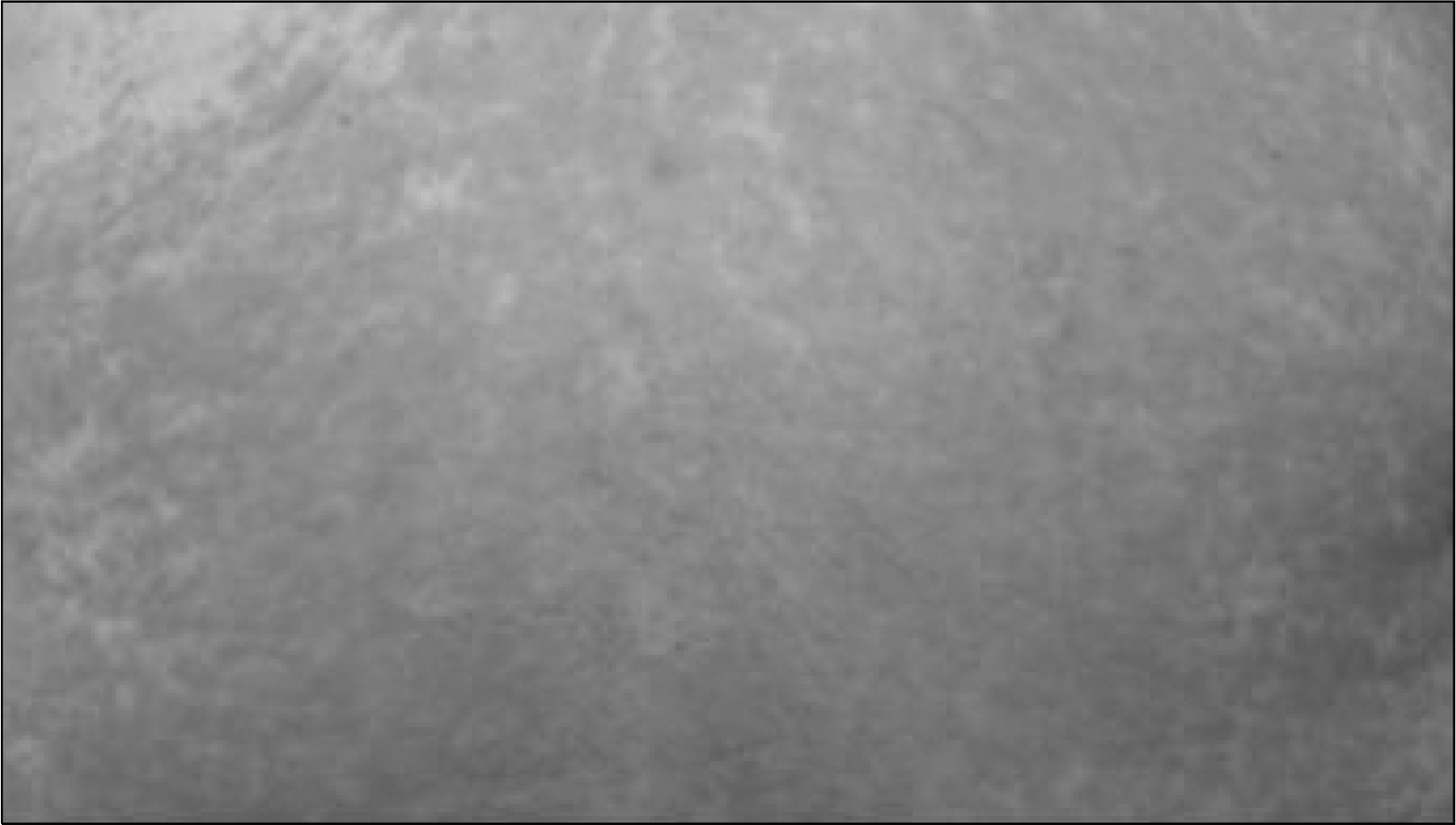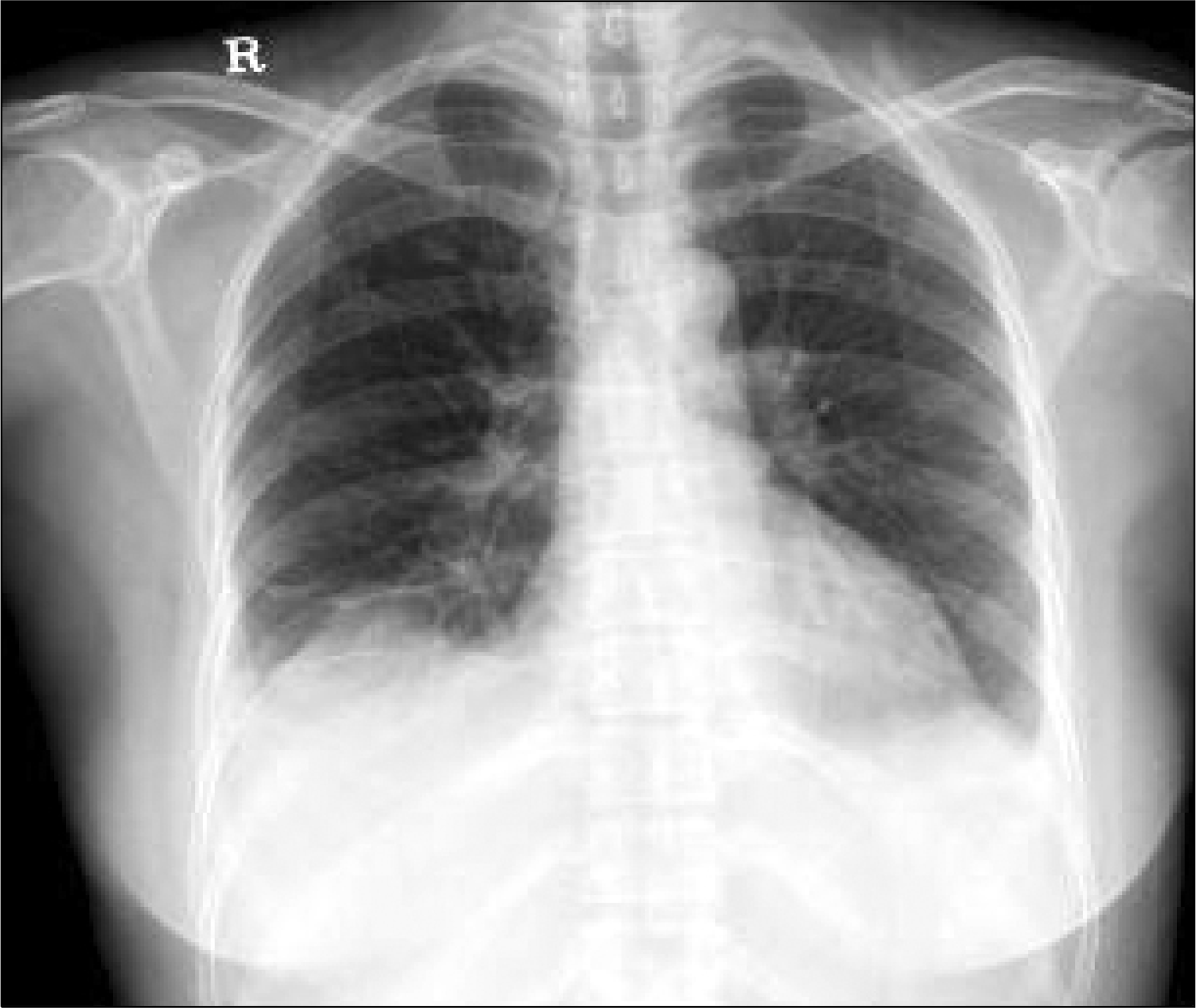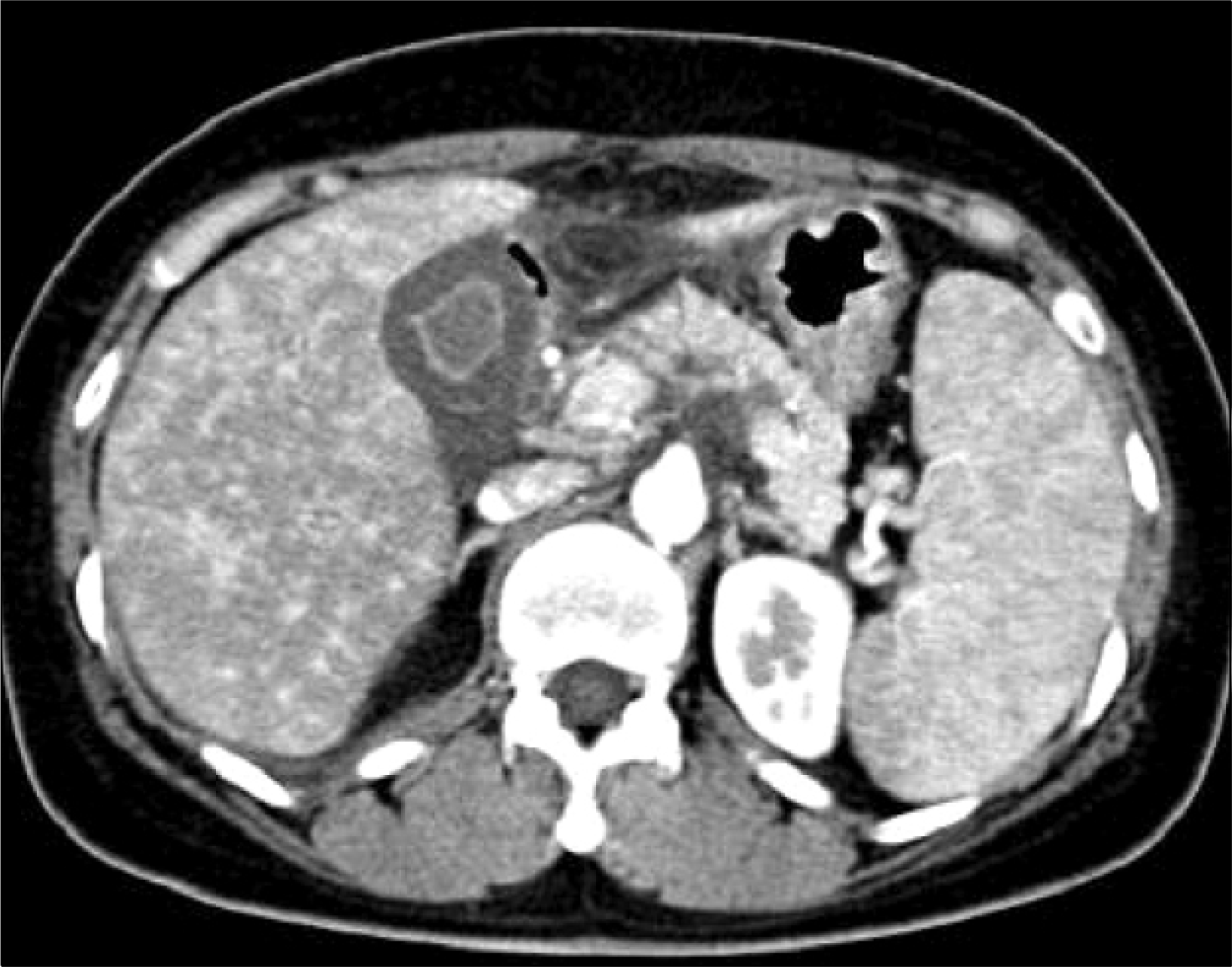Abstract
Dapsone has been used for several dermatological conditions such as immunobullous disease and ulticarial vasculitis. Dapsone is very useful drug for treating the mucocutaneous manifestations of Behcet's disease. The widely recognized side effects of dapsone are headache, methemoglobinemia and hemolysis. The severer, but rarer side effect of dapsone is known as dapsone hypersensitivity syndrome, which consists of exfoliative dermatitis, hepatitis, lymphadenopathy and hemolytic anemia. When this is associated with eosinophilia, we can diagnose and treat this drug reaction with eosinophilia and systemic symptoms (DRESS). DRESS is a syndrome of fever, rash, and internal organ involvement that's secondary to administering the offending medication. We describe here a 47-year-old woman who was hospitalized with fever, skin rash, hemolytic anemia, lymphadenopathy, eosinophilia, pleural effusion and life threatening hepatitis, which could lead to hepatic failure, within three weeks of starting of dapsone therapy for controlling her oral and genital ulcers. We diagnosed the woman as suffering with DRESS syndrome and we started treatment with corticosteroid. Three weeks after starting therapy, her symptoms almost completely resolved and she was discharged.
Go to : 
References
1. Kosseifi SG, Guha B, Nassour DN, Chi DS, Krishnaswamy G. The Dapsone Hypersensitivity Syndrome revisited: a potentially fatal multisystem disorder with prominent hepatopulmonary manifestations. J Occup Med Toxicol. 2006; 6:1–9.

2. Lewe J, Smith M. The chemotherapy of leprosy in Nigeria, with an appendix of glandular fever and exfoliative dermatitis precipitated by sulfones. Int J Leprosy. 1949; 17:181–95.
3. Millikan LE, Harrell ER. Drug reaction to sulfones. Arch Dermatol. 1970; 102:220–4.
4. Kim JW, Kim JS. Two cases of dapsone syndrome. Korean J Dermatol. 2005; 43:655–59.
5. Bocquet H, Bagot M, Roujeau JC. Drug induced pseudolymphoma and drug hypersensitivity syndrome (Drug Rash with Eosinophilia and Systemic Symptom: DRESS). Semin Cutan Med Surg. 1996; 15:250–7.
6. Gruchalla RS. Drug allergy. J Allergy Clin Immunol. 2003; 111(Suppl 2):548–59.
7. Bejia I, Ben Hammouda S, Riahi K, Zinelabidine F, Mediouni B, Touzi M, et al. DRESS syndrome induced by sulphasalazine in rheumatoid arthritis. Joint Bone Spine. 2006; 73:764–5.
8. Lee JH, Park HK, Heo J, Kim TO, Kim GH, Kang DH, et al. Drug rash with eosinophilia and systemic symptoms (DRESS) syndrome induced by celecoxib and anti-tuberculosis drugs. J Korean Med Sci. 2008; 23:521–5.

9. Sullivan JR, Shear NH. The drug hypersensitivity syndrome: what is the pathogenesis? Arch Dermatol. 2001; 137:357–64.
11. Teo RY, Tay YK, Tan CH, Ng V, Oh DC. Presumed dapsone-induced drug hypersensitivity syndrome causing reversible hypersensitivity myocarditis and thyrotoxicosis. Ann Acad Med Singapore. 2006; 35:833–6.
12. Itha S, Kumar A, Dhingra S, Choudhuri G. Dapsone induced cholangitis as a part of dapsone syndrome: a case report. BMC Gastroenterol. 2003; 3:21.

13. Chalasani P, Baffoe-Bonnie H, Jurado RL. Dapsone therapy causing sulfone syndrome and lethal hepatic failure in an HIV-infected patient. South Med J. 1994; 87:1145–6.

14. Lim CH, Bae SH, Shin JA, Uhm JS, You CR, Choi JY, et al. A case of severe hepatitis caused by dapsone syndrome successfully treated with steroids. J Korean Med Sci. 2007; 73:915–9.
Go to : 




 PDF
PDF ePub
ePub Citation
Citation Print
Print





 XML Download
XML Download